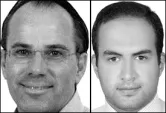What you need to know about Energy Economics - Part 2
By Adriaan Kamp and Ahmad Reza Mir MohammadiExploring journals, internet, and news, you would find enormous literature and hot discussion over energy issues. Many of the articles and comments are based on economic theories. In this article we are going to criticize some aspects and presumptions of standard economic theories.
We will briefly show how these theories evolved over the time, and why they are unable to answer some important questions in the world of energy. We will introduce two concepts of ‘biophysical economics’ and ‘complex adaptive systems’. Finally, we will briefly show why they can broaden our insight in energy economics.
Let’s call the standard economics ‘physical economics’. By standard economics, we mean the economic theories which are widely accepted and are taught in economics schools. In microeconomics, we see theories of production and consumption which support supply and demand in an economy.
Accordingly, the prices of goods are determined in a market when equilibrium forms between supply and demand. In macroeconomics, in neoclassical view, we see generic concepts such as households and firms. Households provide factors of production (land, labor, and capital) for firms.
In return, firms supply goods and services for households. Although energy is critical for the economy, in the best case, it is considered just as a factor of production in economic theories.
But, how can we call it ‘physical economics’? The answer to this question can be found with reviewing origins of these theories. In fact, these theories are products of analogy between economics and physics.
They are mostly developed in 19th century. By that time, laws of Newtonian mechanics and the first law of thermodynamics was discovered. In these laws of physics, the concept of equilibrium plays fundamental role. The concept of “equilibrium” in economics originated from analogy with mechanics and thermodynamics [3]. The economy, goods are transferred from suppliers to consumers until equilibrium emerge between them.
In 20th century, the second law of thermodynamics was discovered. According to this law, the entropy of an isolated system always increases. Entropy is the driving force of systems. Consequently, if a system wants to seeks equilibrium forever it will die. In this whole system approach , energy needs to be considered as input of economic activities.
Most current economic theories were developed at the time in which there was no perception about scarcity of one of the critical factors of production, energy[3].
When there was perception of energy abundance, the entropy production in economy was not so constrained and the economy could perform well. But, currently, we sense that we cannot consume energy like before. We also sense the inconvenient consequences of some resource exploitation on our environment and waste and emissions into the biosphere.
To incorporate these concepts in our economic analysis, we need to add biophysical economic perspective in our analysis. In biophysical economics, the laws of the physical sciences limit and constrain the available choices of economic actors. This type of economics uses basic ecological and thermodynamic principles to analyze the economic processes.
An important concept in biophysical economics is energy return on investment (EROI). EROI is the ratio of energy returned from an energy-gathering activity compared to the energy invested in that process [3].
If it reaches to 1, the economy will collapse as it cannot get energy as input. EROI can be considered as indicator of energy accessibility as well. It is expected that higher value of EROI in an economy result in more reliable and affordable energy supply. It can more reliable because we can get larger volume of energy return from our activities. In other words, there are fewer concerns for energy scarcity. It can also be more affordable because surplus of supply can result in lower prices.
Another weakness of standard economics is its essential assumptions. For example, it assumes that people are rational. Sometime, this rationality is nothing but selfishness. In effect, this assumption is not valid in many situations.
Rationality of people is bounded by many factors. People act differently and the behaviour of others can influence their behaviour as well. In fact, the economy is consisting of many actors and players with different interests and behaviours. The state of our economy emerges from cooperation, competition and interaction of these actors. Such characteristics in our economy can make it a so-called complex adaptive system.
When we consider the economy as a complex adaptive system, we can focus on values, states and behaviours of individuals and their interactions in order to analyse the economy as a whole. In other words, we can generate the expected holistic behaviours by analysing behaviour of individuals. Currently, standard economics uses mathematical equations for expressing macroeconomic facts.
This approach can be called top-down analysis approach whereas, taking the perspective of complex adaptive systems, it is possible to reproduce the behaviours of economy using bottom-up analysis approach.
Adding these relatively two new perspectives (biophysical economics and complex adaptive system) to energy economic analysis seems very necessary. They are promising for broadening our insight about the world we are living in, and giving signals of possible futures of our economies. We are currently working on these concepts.
Next steps
International and energy organisations, energy corporations and research institutes who like to support, partake or receive more information on this work- are invited to contact the authors and originators of this work:
Adriaan Kamp- [email protected]
Ahmad Reza Mir Mohammadi– [email protected]




















 Advertise
Advertise






